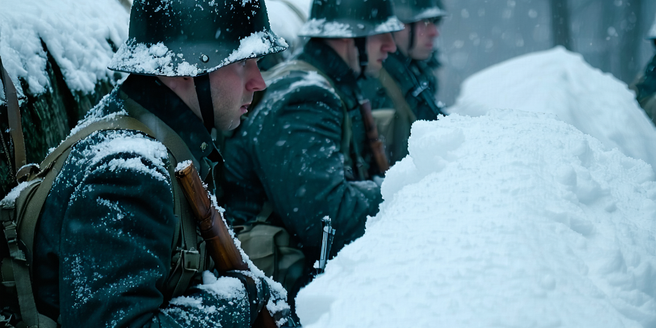
The Harsh Realities of Trench Life
Living conditions in World War I trenches were notoriously brutal. Soldiers faced persistent threats from enemy attacks, but the environment itself was equally punishing. The trenches were mostly muddy, waterlogged pits, a breeding ground for disease and infection. Men suffered from trench foot, a painful condition caused by prolonged exposure to damp, unsanitary conditions. Rats, lice, and the constant stench of decay added to the soldiers’ misery. Amidst these conditions, mental health was severely impacted as the endless cycle of rain, mud, and fear loomed over them. Enduring these horrendous living conditions took a significant toll on soldiers’ morale, proving that the trench was as much an adversary as the enemy itself, forever etching the brutalities of trench life into the annals of history.
Daily Challenges Faced by Soldiers
The soldiers stationed in trenches during World War I encountered an unending series of daily challenges. From the minute they awoke until the time they sought whatever rest could be snatched, they were beset by an array of obstacles. Food was often scarce or unpalatable, leading to malnutrition and weakened physical states. Sleep was disrupted by constant bombardments and the necessity of night watches. Communication with the command structure was spotty and unreliable at best, making strategic coordination difficult. Additionally, exposure to freezing temperatures, snow, and rain made hypothermia a real threat. Soldiers had to remain vigilant against surprise enemy attacks and snipers, while also enduring the psychological effects of being confined in such dismal conditions. These day-to-day hardships wore down even the toughest soldiers, testing their limits beyond imagining.
Weather’s Impact on Trench Conditions
The weather had a profound impact on the conditions within World War I trenches. Rain turned the trenches into muddy quagmires, where movement was not only difficult but dangerous. Flooding was common, leading to standing water, which increased the risk of diseases such as dysentery and trench foot. During winter, temperatures often plummeted, and trenches were covered in snow and ice, leading to frostbite and further complicating basic tasks. The summer months offered little reprieve, as heat and humidity resulted in swarms of flies and the rapid decomposition of waste and corpses, creating unbearable living situations. Soldiers struggled to adapt their routines to these relentless weather challenges, further burdening their already strenuous existence. The men who operated within this melee of elements often faced more adversity from nature than from the battlefield.
Strategies for Coping with Environmental Stress
Faced with the harsh environment of the trenches, soldiers developed various strategies to cope with the relentless environmental stress. Maintaining personal hygiene, though difficult, was emphasized to prevent diseases. Makeshift shelters and dugouts were reinforced with timber and sandbags to provide some protection against rain and bullets. To combat trench foot, men were encouraged to regularly change their socks and apply whale oil to their feet as a waterproof barrier. Rotational shifts out of the front lines were instituted where possible, offering soldiers brief respite and a chance to recover physically and mentally. Humor and camaraderie among troops became invaluable tools for boosting morale. These coping strategies, though simple, were essential for survival in an unforgiving and relentless landscape, providing soldiers with the means to endure while preserving their spirit amidst adversity.
Legacy of Trench Warfare Weather Effects
The weather conditions faced by soldiers in World War I trenches left a lasting legacy. The term ‘trench foot’ still conjures images of the debilitating condition caused by prolonged wet conditions, emphasizing the harsh environmental trials faced by soldiers. The extreme weather also influenced military strategy and technology, prompting developments in protective clothing, trench design, and battlefield logistics. Post-war, the stories of survival in the face of environmental adversity highlighted the resilience and adaptability of the human spirit. The impact of these conditions is studied in military history to understand the interplay between weather and warfare, offering valuable lessons for future conflicts. Trench warfare in WWI stands as a stark reminder of how terrain and weather can become formidable adversaries, shaping military experiences and altering the course of history.
